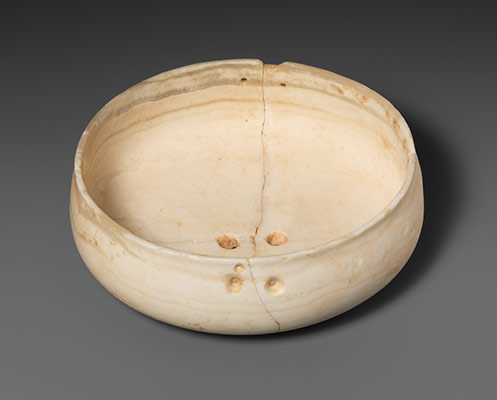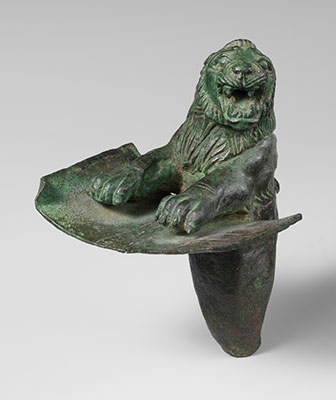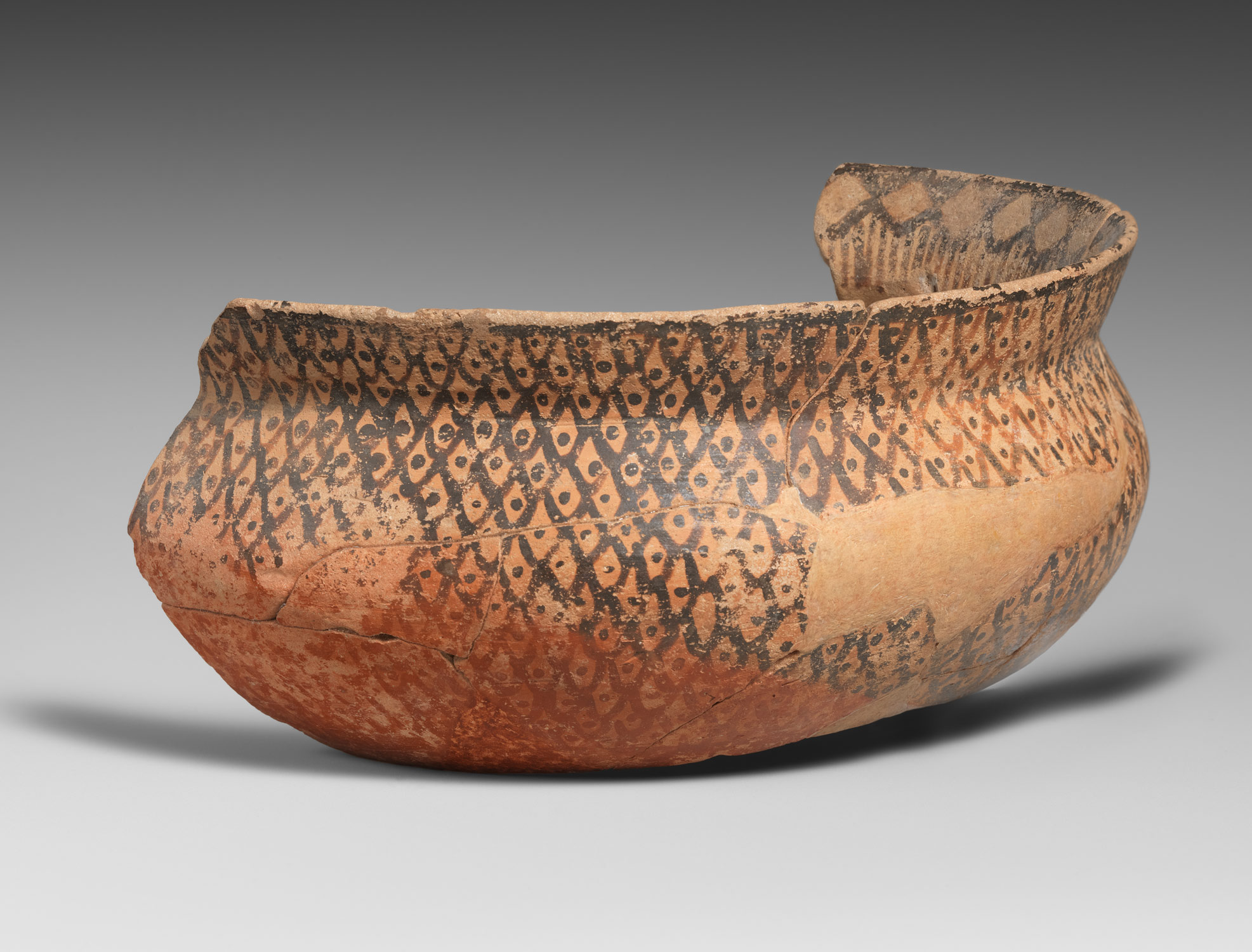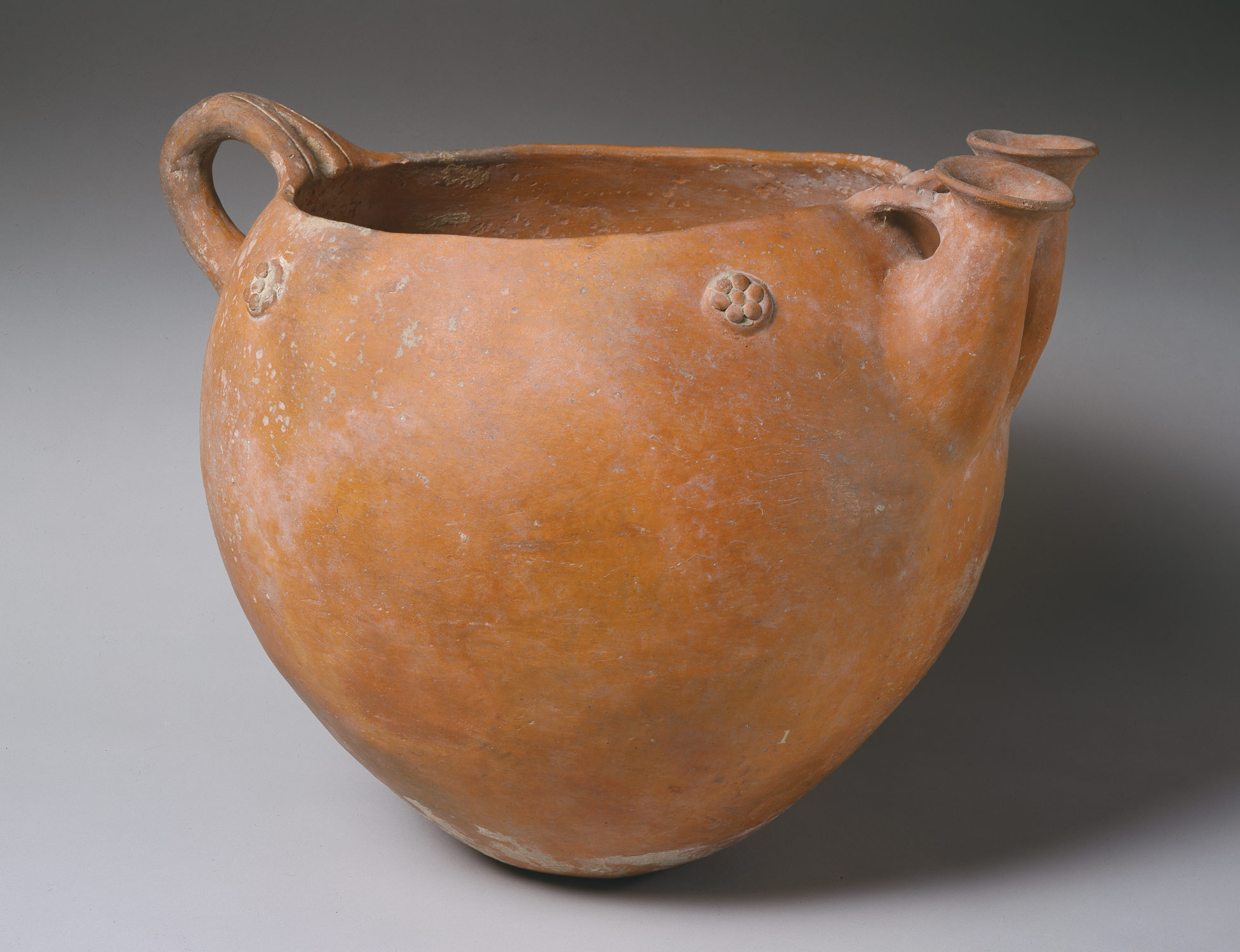After the end of the last Ice Age, people settle in areas where they can exploit the local species of wheat and barley, and animals such as gazelle. Most of these settlements occur in an arc, the so-called Fertile Crescent, stretching from the southern tip of the Dead Sea north toward the Anatolian plateau, moving east to the northern Mesopotamian plains, and ending in southwestern Iran. In the eastern Mediterranean, this culture is known as Natufian and lasts more than a thousand years, from around 11,000 B.C. to about 9300 B.C., when the sites appear to be abandoned. By 8500 B.C., permanent settlements appear in large numbers where an increasingly wider range of domesticated plants and animals offer an ever more reliable form of subsistence. As these new communities grow, more elaborate forms of architecture and artistic representation reflect an increasingly differentiated social hierarchy. In the third millennium B.C., during the Early Bronze Age, local city-states develop. These are variously linked by trade with Egypt, north Syria, and Anatolia.
The Eastern Mediterranean and Syria, 8000–2000 B.C.
Timeline
8000 B.C.
6500 B.C.
ISRAEL, JORDAN, LEBANON, AND WESTERN SYRIA
CYPRUS
6500 B.C.
5000 B.C.
ISRAEL, JORDAN, LEBANON, AND WESTERN SYRIA
CYPRUS
5000 B.C.
3500 B.C.
ISRAEL, JORDAN, LEBANON, AND WESTERN SYRIA
CYPRUS
3500 B.C.
2000 B.C.
ISRAEL, JORDAN, LEBANON, AND WESTERN SYRIA
CYPRUS
Overview
Key Events
-
ca. 8000–7000 B.C.
Situated in the Jordan Valley, Jericho has a large stone tower, preserved to a height of almost thirty feet. Its attached wall may have enclosed the entire site, which measures three to four hectares. Textiles (the oldest preserved) are produced at Nahal Hemar in the Judaean desert. Made mainly of linen, the material includes a blue-dyed fabric decorated with beads and shells.
-
ca. 7000–6000 B.C.
A thousand years before the use of pottery, clay and plaster are molded to form statues at Jericho and ‘Ain Ghazal. Fashioned on reed frames, they portray men, women, and children. Plastered human skulls with cowrie shells set into the eye sockets are also a feature of this period.
-
ca. 6000–4500 B.C.
By the end of the seventh millennium B.C., pottery is widely used. Forms of pottery and its decoration become the basis by which archaeologists today define local cultures. The earliest pottery from the eastern Mediterranean is produced in the Yarmuk River valley of Israel at sites such as Sha’ar Hagolan. This is mainly decorated with incised geometric patterns. Clay figurines from this site include seated women with coffee bean–shaped eyes.
-
ca. 4500–3500 B.C.
Farmers in Israel and Jordan begin to cultivate olives and dates, and herders begin to use milk products from domesticated animals. Specialized artisans produce exquisite wall paintings, terracotta figurines and ossuaries, finely carved ivories, and basalt bowls and sculpture. At the site of Nahal Mishmar, a hoard of 442 copper objects, made by the lost-wax method, includes maceheads, crowns, and standards. At nearby En Gedi, an impressive temple with plastered and painted interior walls is built on a stone terrace.
-
ca. 3500–2300 B.C.
Large fortified cities emerge across the region and engage in a flourishing trade with the increasingly unified Egyptian kingdom. Timber from the mountains of Lebanon, as well as silver and aromatic oils from further north and east, are transported to Egypt by sea from Byblos. Throughout the period, the southern Levant maintains contact with Egypt, while the northern Levant has strong links with Mesopotamia. At the major city-state of Ebla in north Syria, a distinctive local style develops, especially in seal carving, whereas the use of inlays, sculptural forms, and cuneiform writing reflects strong Sumerian influences. Other evidence for international contacts at Ebla include more than forty pounds of raw lapis lazuli from Afghanistan and an equally impressive number of alabaster and diorite vessels from Egypt. Ebla is burned, perhaps during the military campaigns of the kings of the Akkadian empire from southern Mesopotamia.
-
ca. 2300–2000 B.C.
For reasons not entirely clear but perhaps in part related to climatic changes, city-states throughout the Levant are abandoned and the population adopts a pastoral way of life, settling in villages and encampments on the steppes.
Citation
“The Eastern Mediterranean, 8000–2000 B.C.” In Heilbrunn Timeline of Art History. New York: The Metropolitan Museum of Art, 2000–. http://www.metmuseum.org/toah/ht/?period=02®ion=wae (October 2000)
Related
Map

Primary Chronology
Secondary Chronology
See also
Keywords
- Anatolia and the Caucasus
- Arabian Peninsula
- Asia
- Central and North Asia
- Cypriot Art
- Cyprus
- Eastern Mediterranean
- Halaf Period
- Israel
- Jerusalem
- Jordan
- Lebanon
- Mesopotamian Art
- Palestine
- Syria
- Turkey
- Ubaid Period
- West Asia
- Prehistoric Art
- Neolithic Period
- Chalcolithic Period
- Bronze Age
- 8th Millennium B.C.
- 7th Millennium B.C.
- 6th Millennium B.C.
- 5th Millennium B.C.
- 4th Millennium B.C.
- 3rd Millennium B.C.













